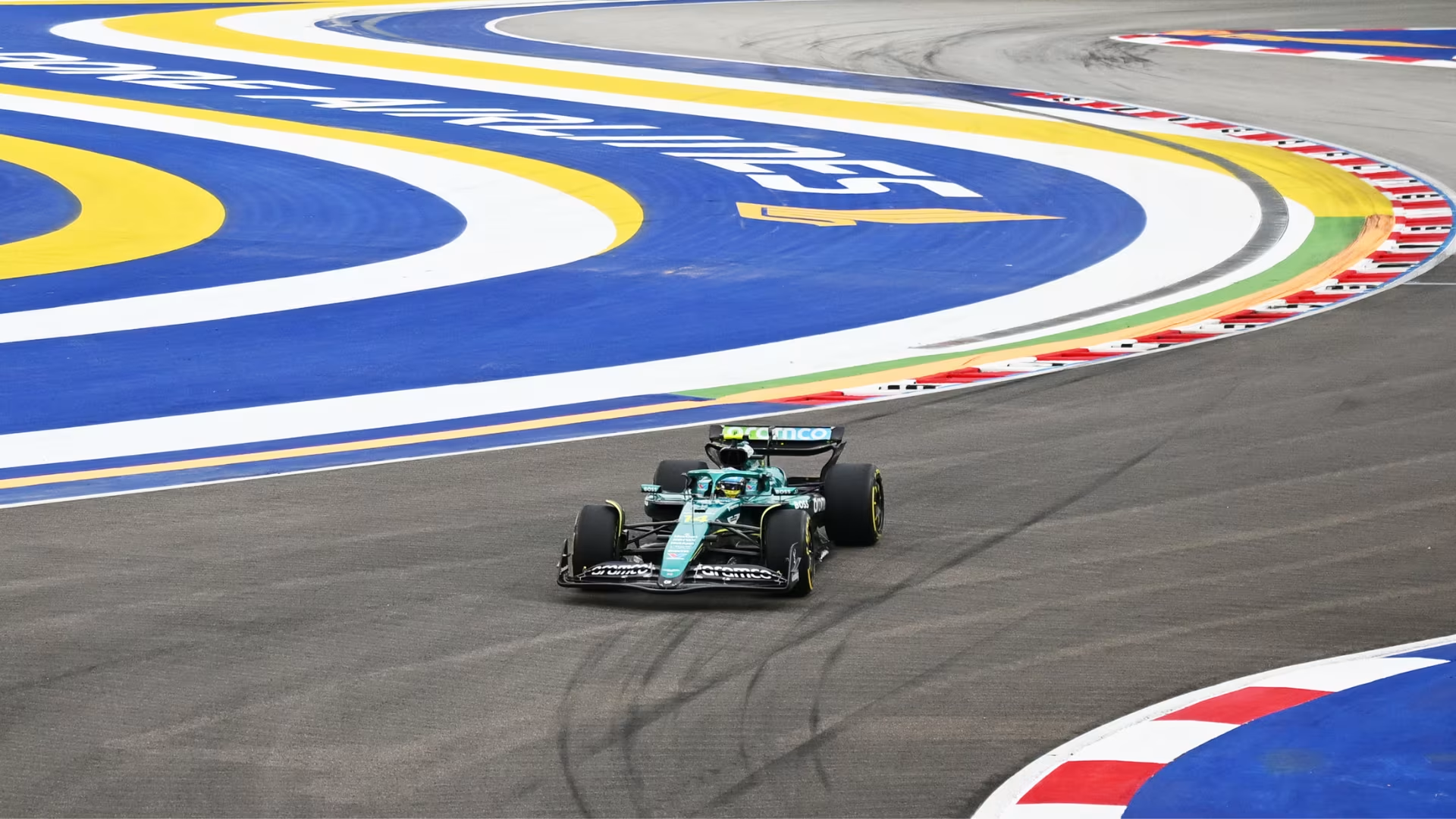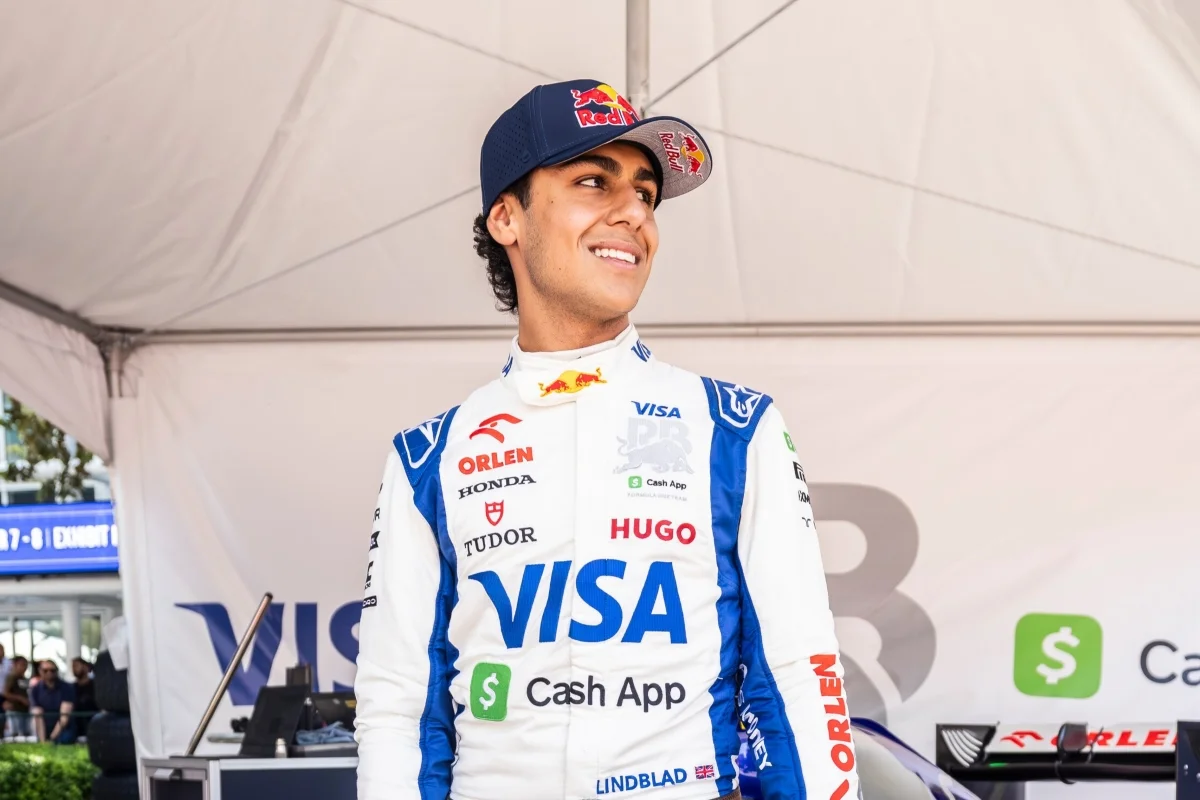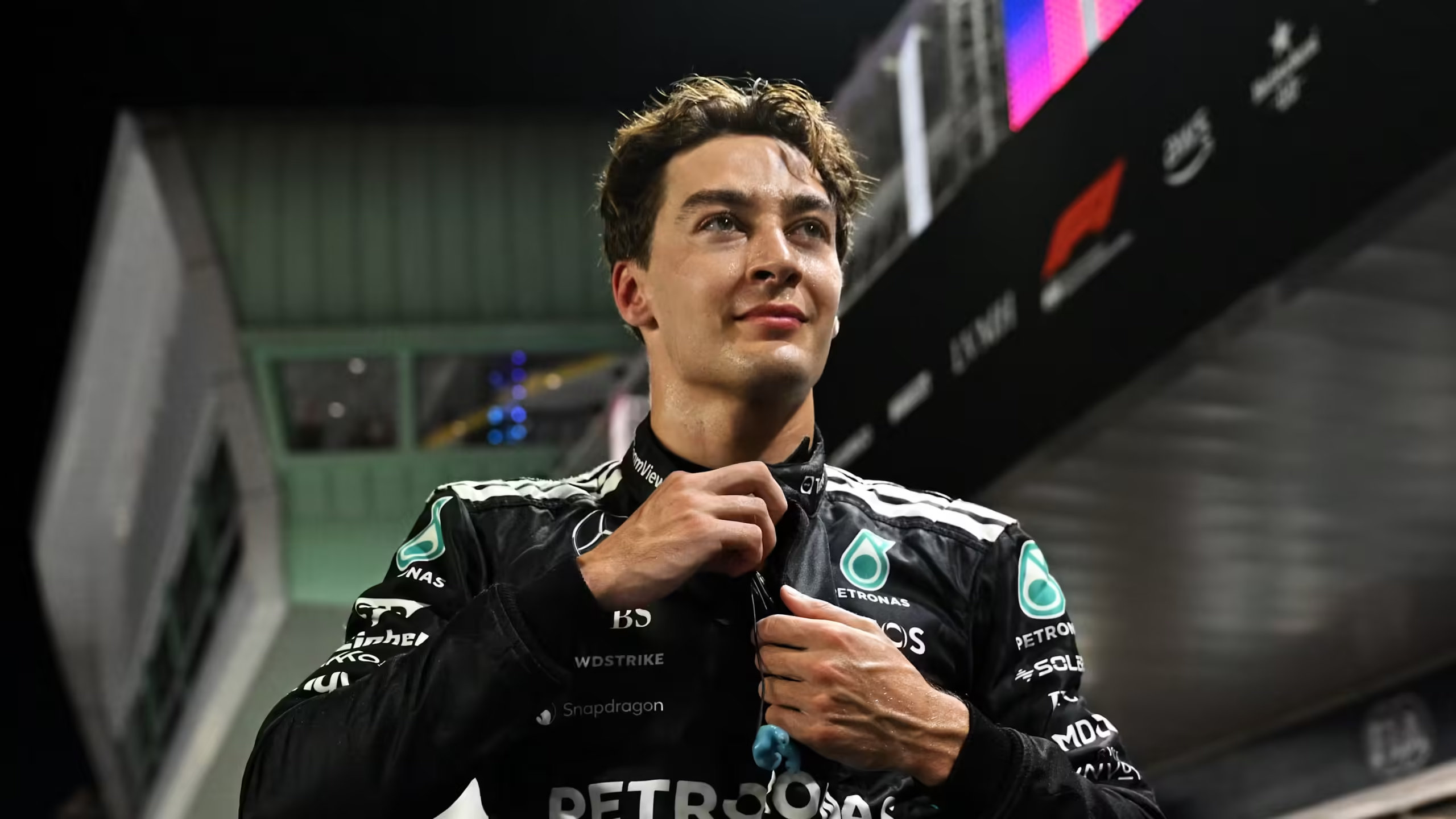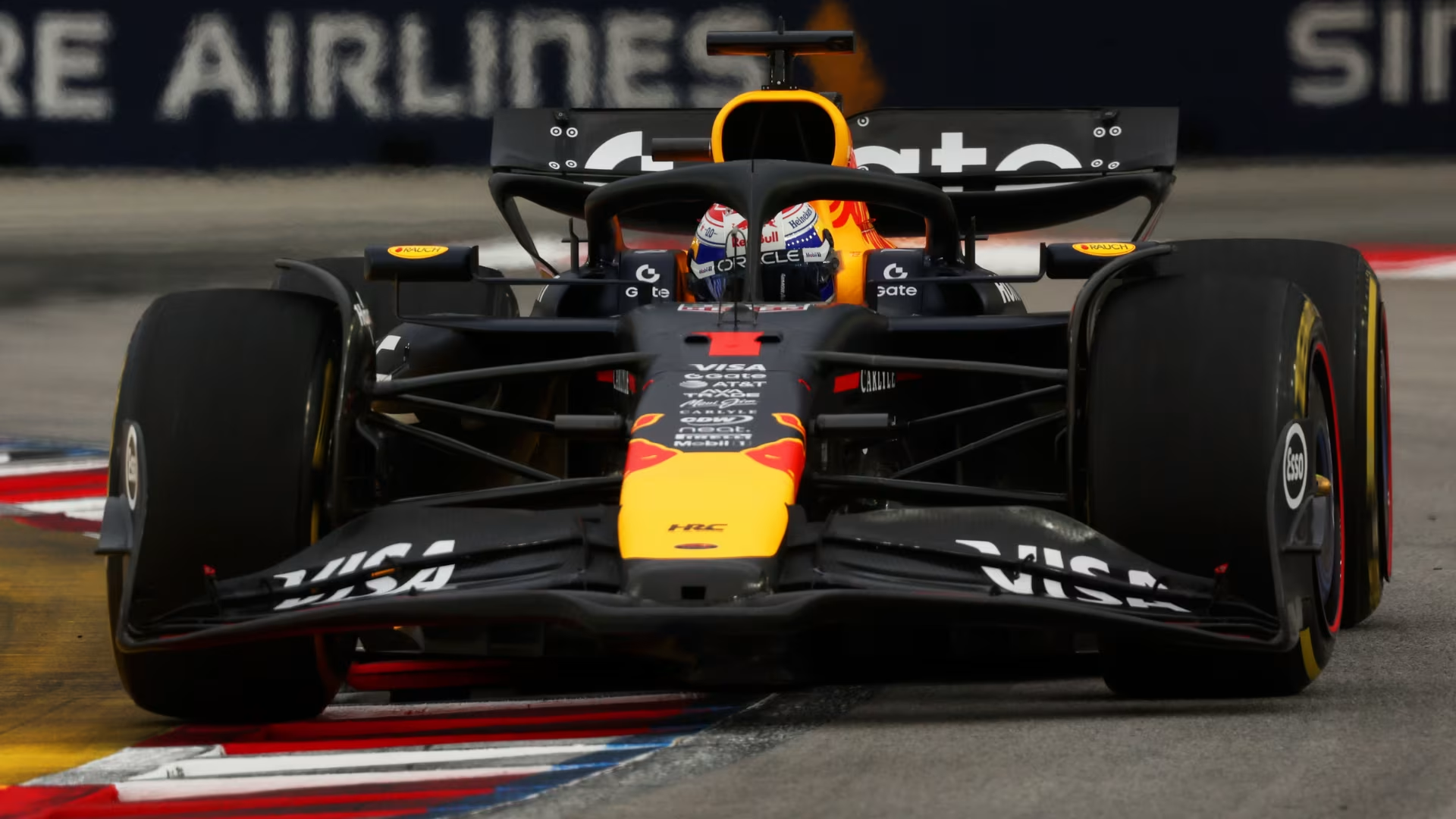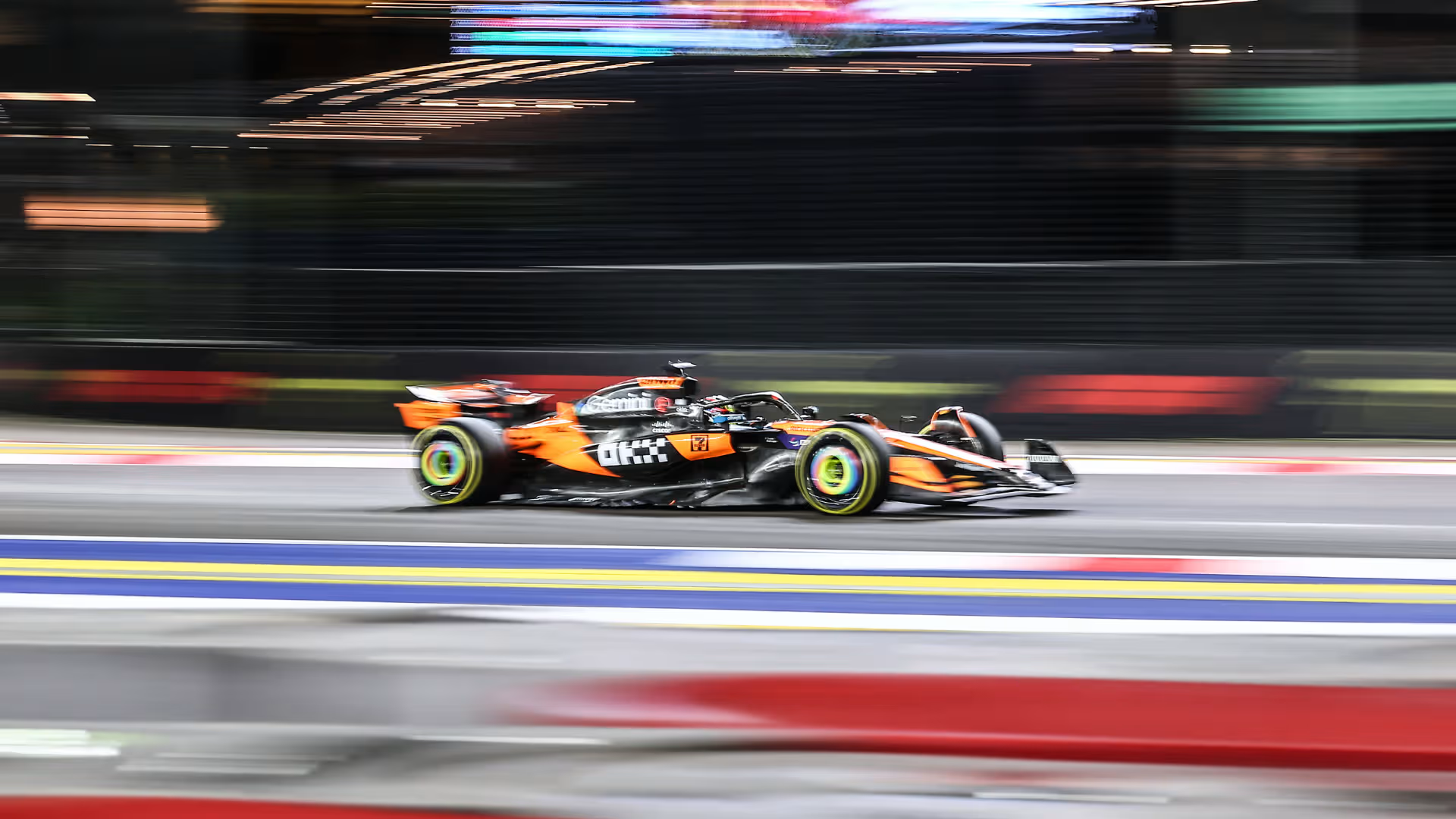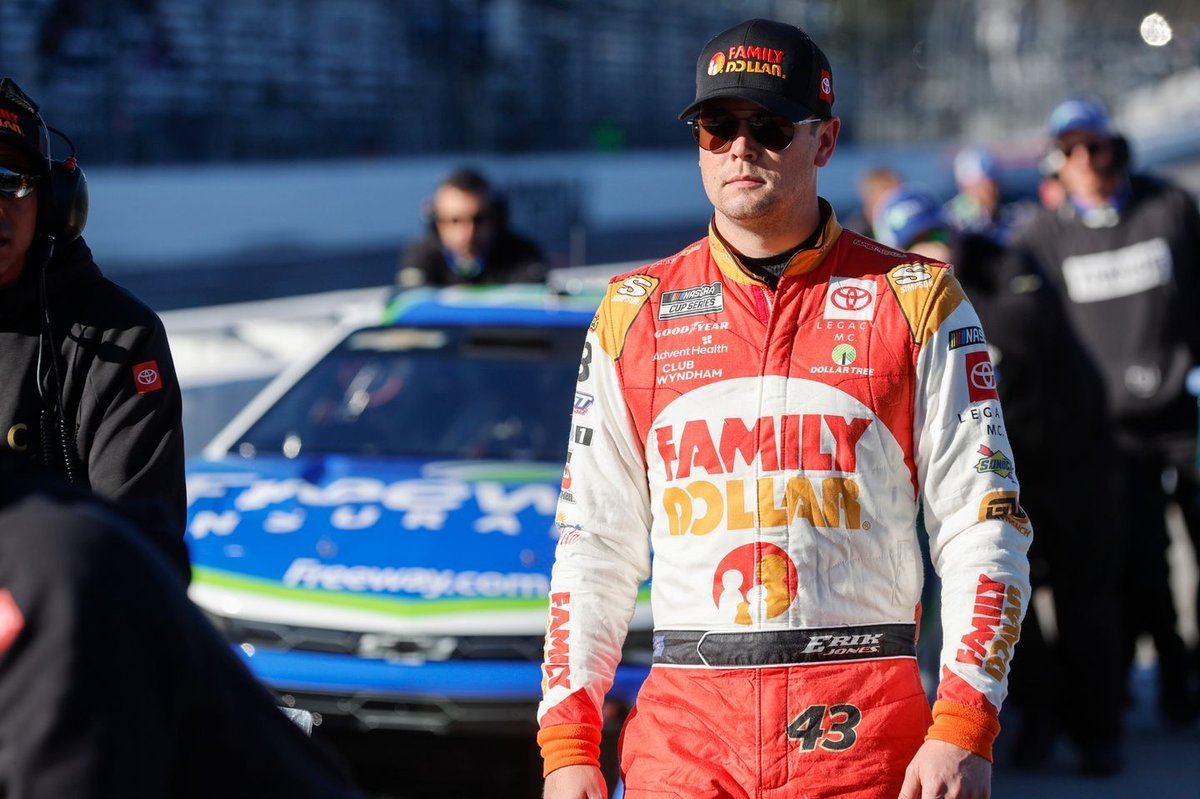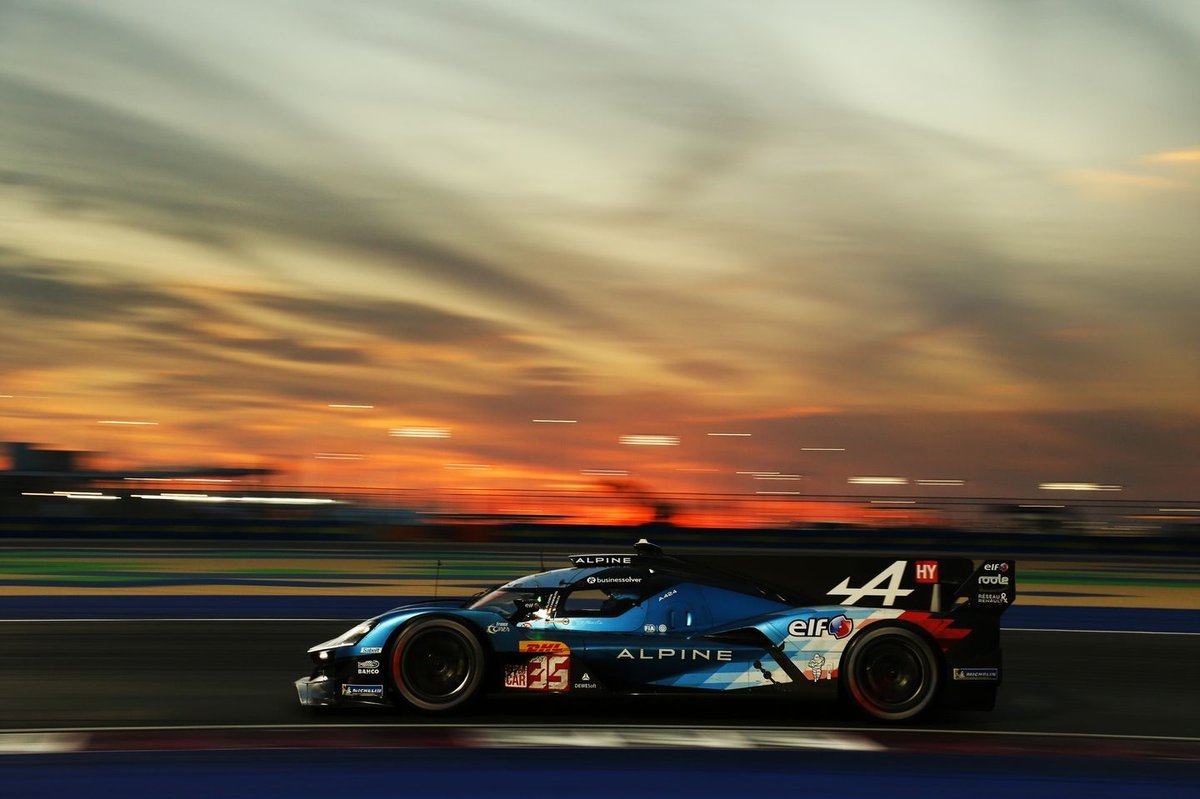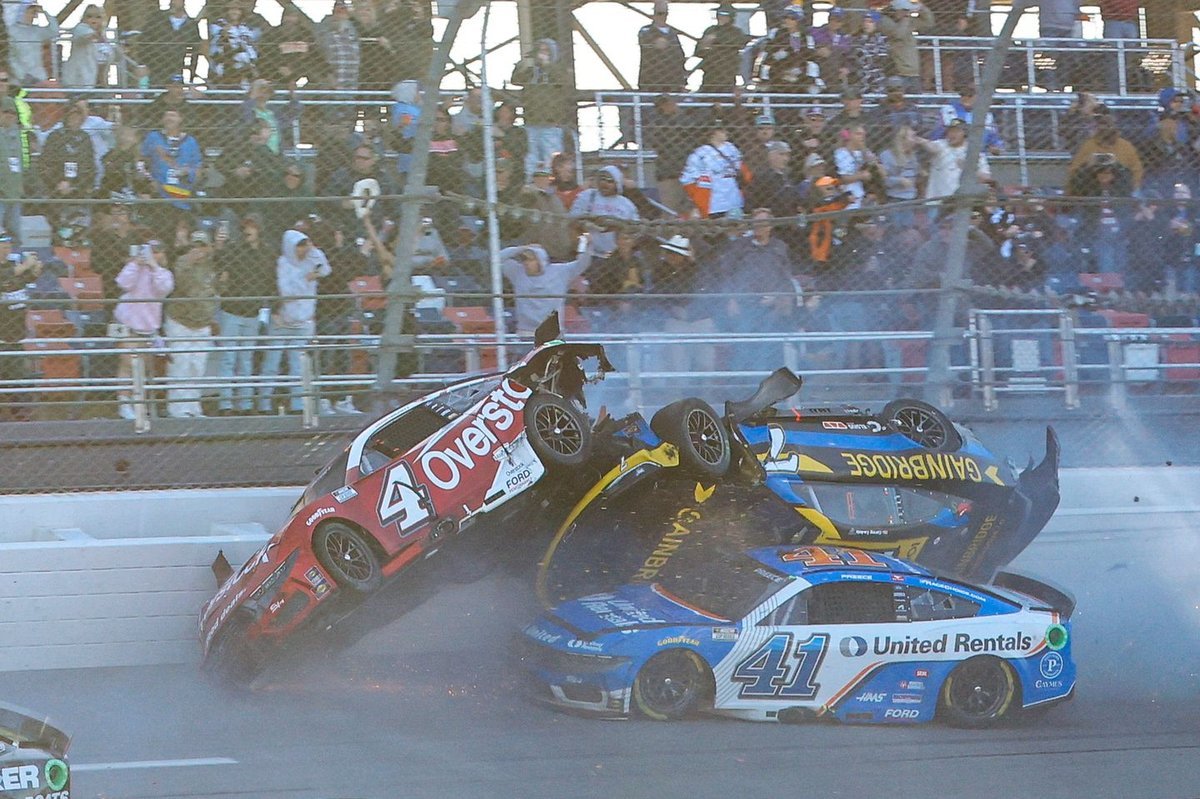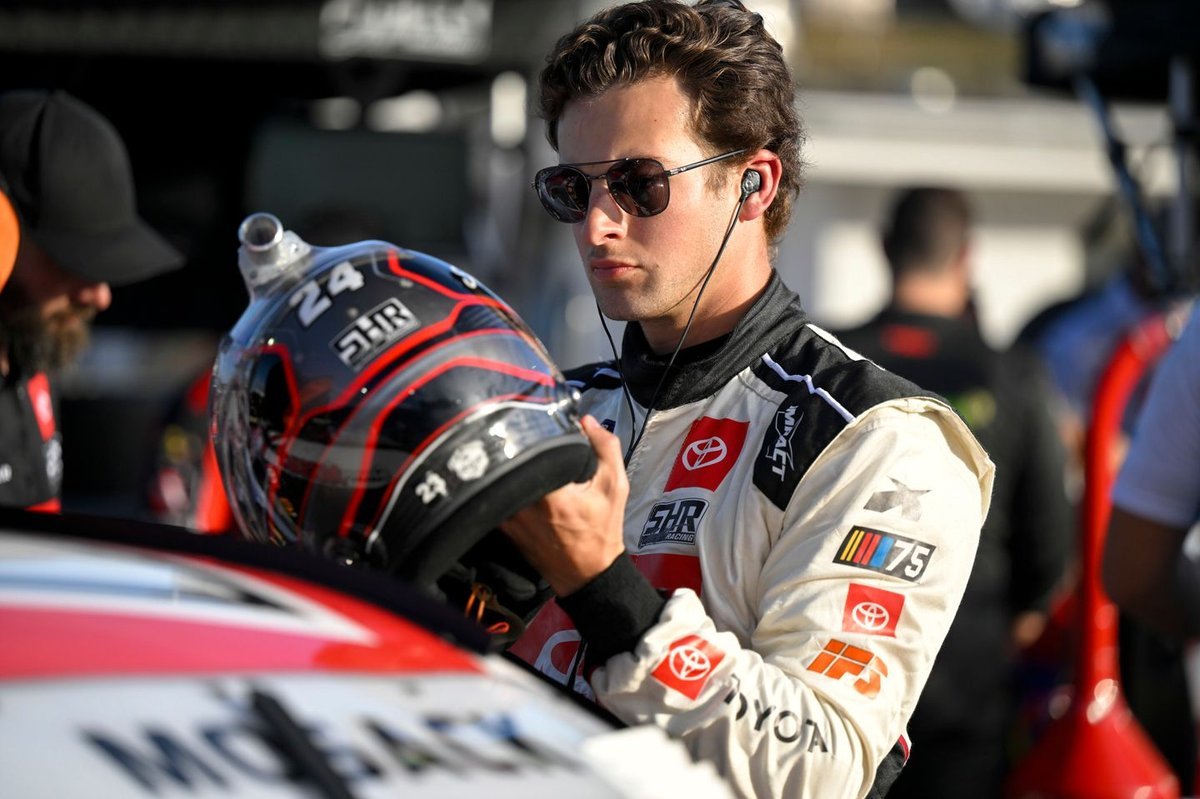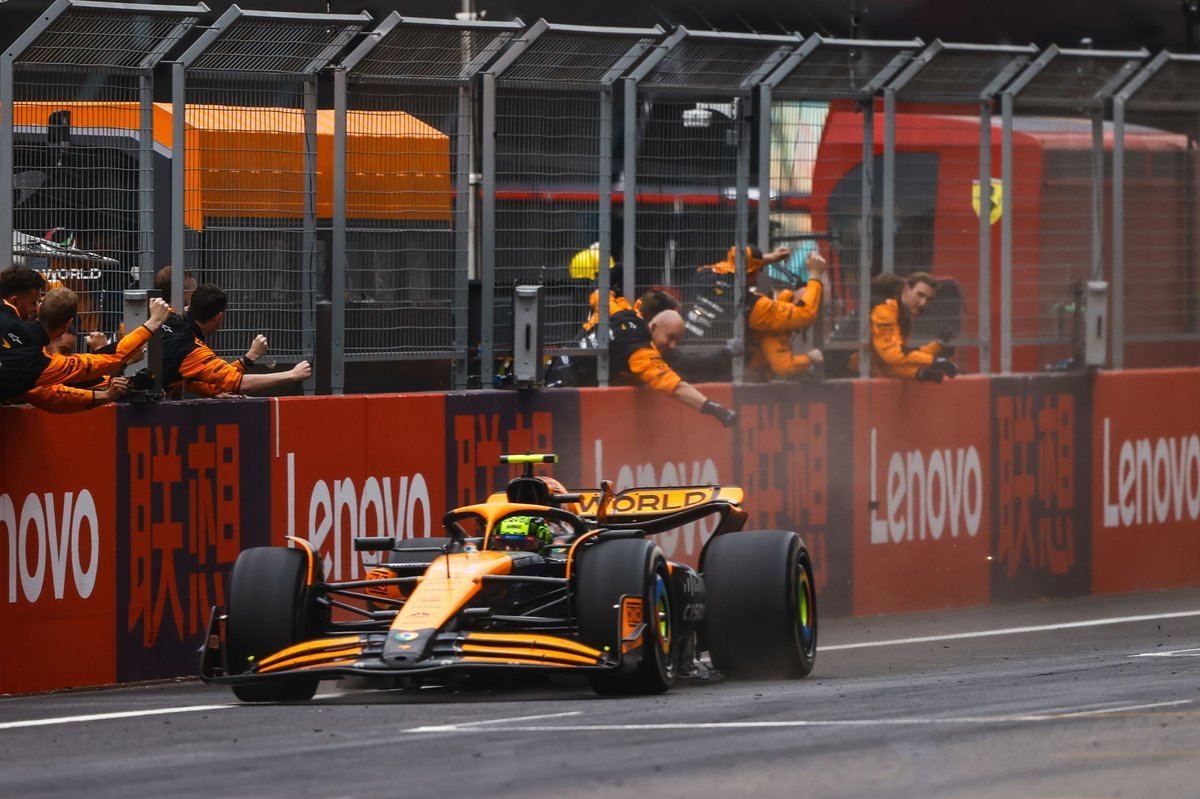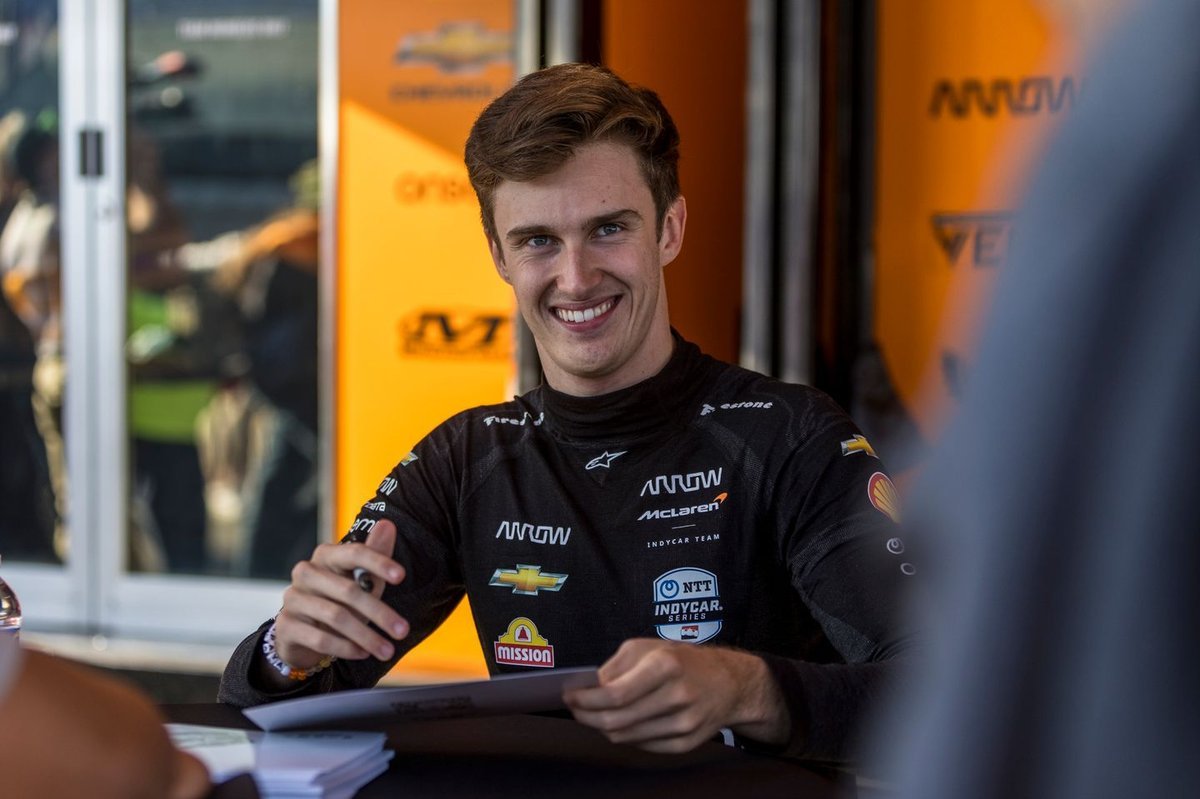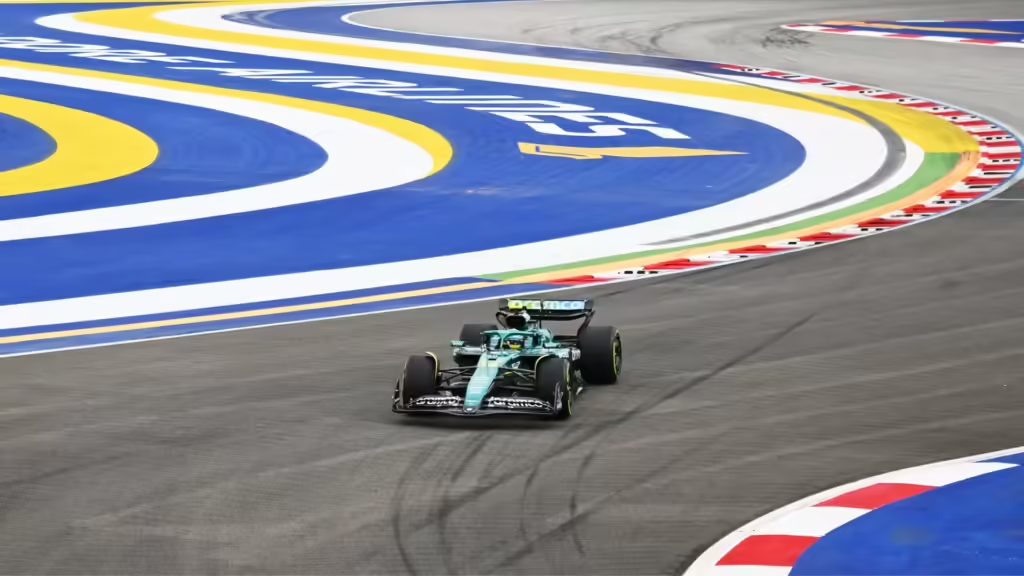
Fernando Alonso shines in Singapore FP1, leading Charles Leclerc and Max Verstappen in a thrilling start to the weekend’s action at Marina Bay.
When the green lights flickered on at Marina Bay, few expected the veteran Fernando Alonso to steal the spotlight. Yet, under Singapore’s humid skies, the Aston Martin ace proved that experience and precision still matter as he topped the timesheets in the first practice session of the Singapore Grand Prix weekend. With a best lap of 1m 31.116s, Alonso led Ferrari’s Charles Leclerc and Red Bull’s Max Verstappen, setting the stage for an exciting weekend ahead.
Introduction: Alonso’s Surprise at Marina Bay
The Singapore Grand Prix weekend began with a twist no one quite expected—Fernando Alonso placing Aston Martin at the very top. Under the gleaming floodlights and unpredictable conditions, the 42-year-old Spaniard showed flashes of his old magic. For fans and teams alike, FP1 turned into a statement of intent—Aston Martin wasn’t just here to participate, but to compete.
Hot and Humid Start: The Challenge of Singapore
Singapore’s weather is infamous among drivers. The intense humidity, mixed with the lingering dampness from earlier showers, created a cocktail of discomfort and unpredictability. The session kicked off at 5:30 PM local time, with temperatures soaring and the track still slightly greasy in some corners. It wasn’t just about speed—it was about survival and adaptation.
FIA’s ‘Heat Hazard’ Warning and Cooling System Innovation
Following the Qatar Grand Prix’s extreme conditions in 2023, the FIA took no chances this time. Officials issued a ‘heat hazard’ declaration and introduced a Driver Cooling System to help combat soaring cockpit temperatures. It was a small but vital adjustment that allowed drivers to focus more on their lap times and less on their core body temperature.
Early Action: Cars Rush to the Track
As soon as the pit lane light turned green, all 20 cars were eager to hit the asphalt. Most teams opted for hard tyres to collect early data, while Aston Martin took a bold approach on mediums. Despite a few damp patches, the track was busy and buzzing within minutes.
Albon’s Early Drama and Williams’ Setback
The session took a dramatic turn when Alex Albon pulled into the pits with smoke billowing from the rear of his Williams. Mechanics quickly jumped into action with air blowers and fire extinguishers, revealing what was later confirmed as a rear brake hardware issue. Unfortunately, that meant an early end to Albon’s running—his team, however, expressed confidence in fixing the issue before FP2.
Finding Rhythm Around the Circuit
The rest of the grid continued pushing, gradually building rhythm around the twisting Marina Bay Street Circuit. Lando Norris briefly went quickest with a 1m 33.388s, though not without drama—his McLaren slid wide at Turn 17. Meanwhile, Charles Leclerc had a small lock-up at Turn 13, showing how tricky grip levels were early on.
Alonso Emerges as the Early Pacesetter
Roughly fifteen minutes in, Alonso fired his first warning shot. On medium tyres, he clocked 1m 32.592s, going fastest ahead of Verstappen, Leclerc, and the McLarens. His pace was no fluke—it was controlled, clean, and confident. As the session progressed, it became clear Aston Martin had found something that clicked in Singapore’s narrow confines.
Mechanical Troubles and Missed Opportunities
While Alonso soared, others stumbled. Williams’ woes continued with Albon sidelined, and Pierre Gasly found himself in the Turn 14 runoff after overcooking his Alpine’s braking. Even Lewis Hamilton had a brush with the wall while pushing through the same corner—proof that Singapore punishes even the smallest mistakes.
Mistakes, Close Calls, and Wall Brushes
The Marina Bay Circuit is like a tightrope—one misstep, and you’re in the wall. Drivers like Hamilton and Gasly learned that quickly. Yet, amidst all the chaos, Alonso kept his Aston Martin neatly within the limits, using every inch of track but not a millimeter more.
Alonso, Sainz, and Leclerc Trade Fastest Laps
As the track evolved, lap times tumbled. Alonso dipped to 1m 32.054s, before Carlos Sainz briefly claimed P1 with a 1m 31.812s. The pace was already nearing 2023’s FP1 benchmark—Leclerc’s 1m 31.763s. The tension built as teams switched to soft tyres, knowing this would hint at their qualifying performance.
The Switch to Soft Tyres: The Real Battle Begins
Once the soft compounds came out, purple sectors lit up across the timing screens. Leclerc surged ahead with 1m 31.266s, Verstappen close behind, and Norris within striking distance. But Alonso wasn’t done. With clinical precision, he unleashed a lap of 1m 31.116s, reclaiming the top spot and silencing any doubts about Aston Martin’s pace.
Piastri’s Struggles and Norris’ Steady Pace
McLaren’s Oscar Piastri seemed uneasy with his car setup, calling it “very understeery.” Despite early struggles, he managed to improve late in the session, narrowly edging out Norris for fifth place. It was a much-needed recovery after a difficult weekend in Azerbaijan, where he lost ground in the standings.
Alonso’s Final Push: The Lap That Stood Out
As the clock ticked down, Alonso’s lap stood firm. Neither Leclerc nor Verstappen could dethrone him. Behind them, Hamilton, Piastri, Hadjar, Sainz, Tsunoda, and Ocon completed the top 10. It was a result that raised eyebrows—Aston Martin on top, in a session dominated by the sport’s younger stars.
Quiet Session for Mercedes and Midfield Shuffles
Mercedes seemed to take a conservative approach. George Russell and Kimi Antonelli finished 11th and 14th, sandwiched between Hulkenberg and Gasly. Further back, rookies Lawson, Bearman, Bortoleto, and Colapintocontinued their learning curve. Alonso’s teammate Lance Stroll struggled to match pace, while Albon watched from the garage.
What Lies Ahead in FP2 and Beyond
FP1 may not define the weekend, but it sets the tone—and Alonso’s tone was loud and clear. With FP2 scheduled for 9 PM local time, teams will fine-tune their setups in conditions closer to qualifying and race night. Can Alonso maintain the momentum under the lights, or will Red Bull and Ferrari strike back?
Conclusion
Fernando Alonso’s performance in FP1 wasn’t just a fast lap—it was a statement. At 42, he remains a master of adapting to evolving conditions, reading the track, and extracting every ounce of speed from his car. As the Singapore Grand Prix unfolds, the veteran’s name might just stay at the top a little longer.
FAQs
1. How did Fernando Alonso top FP1 in Singapore?
Alonso combined experience, precision, and strong medium-tyre pace to set the fastest lap, outpacing Leclerc and Verstappen.
2. What issue forced Alex Albon to retire from FP1?
Albon’s Williams suffered a rear brake hardware failure, forcing the team to end his session early.
3. Why did FIA introduce a Driver Cooling System in Singapore?
It was a safety measure following extreme heat conditions at the 2023 Qatar GP to help drivers manage cockpit temperatures.
4. Which drivers struggled during FP1?
Oscar Piastri initially battled understeer, Hamilton brushed the wall, and Gasly went off at Turn 14.
5. When does FP2 for the Singapore Grand Prix take place?
FP2 is scheduled for 9:00 PM local time, offering more representative night-time race conditions.

